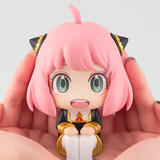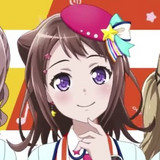#5 Things We Learned About Anime Production From The A-1 Pictures Special Talk Show
Table of Contents
“#5 Things We Learned About Anime Production From The A-1 Pictures Special Talk Show”
During the “A-1 Pictures Special Talk Show” at Aniplex Online Fest, one of the event’s MCs, Sally Amaki, spoke with A-1 Pictures’ Atsushi Kaneko and Naoki Suda. Kaneko is an animation producer, while Suda is an animation inspector and in-between animator. Through them, we got to learn a bunch of interesting details about anime production.
Sakuga fans or those who’ve delved into the process of anime production – which is obviously much deeper than what’s covered here – will probably be familiar with most, if not all, of these details. But if you’re new to the behind-the-scenes aspect of anime, the following should be informative and enlightening.
The first episode of Sword Art Online Alicization War of Underworld Final Season features over 10,000 pictures
Kaneko told Amaki that, instead of counting the number of key animations needed for an episode, “What becomes most important in the end is the number of pictures* in the video.” Holding up a sheet, he said, “As you can see here again, there are key animations from one to six. So while there are six key animations, the number of pictures needed for the video becomes 15 in order for it to look right.”
“I’m sure it varies quite a bit depending on the studio, too,” added Kaneko. “But generally, the number of pictures in a 30-minute video would be about, I would say, 3,000 to 5,000. That would be the overall count for an anime episode.” However, Sword Art Online was “a whole different story.”
“It demands a lot of work from the animators,” shared Kaneko. “For example, the first episode of the final season… needed more than 10,000… About 11,000?”
“It surpassed 10,000,” confirmed Suda.
In response to a question from Amaki, Suda said that “battle scenes definitely add to the count.”
However, Kaneko also said, “Most likely, the cuts that viewers pay the least attention to require the most pictures. I have no doubt.”
*While the subtitles use the word “pictures,” they are likely referring to the number of frames per episode, which is the term used in these articles by Crunchyroll and Washi’s Blog respectively.
Key animation, layouts, and in-betweens

We mentioned key animations in the previous point, but what are those? Kaneko provided a simple but handy explanation of part of the drawing process with a cut envelope he had brought. The cut envelope contained the opening cuts from the previous season of Sword Art Online.
“After the director and the episode director provide the storyboard, the animators start the process of drawing pictures based off of it,” Kaneko said. “The first draft done by the animators is called the ‘layout.’” He held up a layout for a cut labeled A-3, featuring the character Alice Zuberg, and noted, “You can spot a few quirks of the animator who drew this”.
“Based on the layout, we get the animators to create key animation as the next step,” Kaneko continued. Holding up an example of a key animation, he said, “At first glance, they look the same. But it goes without saying that the key animation is all cleaned up.”
After the key animations come the in-betweens. “This is the same across all anime studios, but the in-between animations are being produced digitally now,” Kaneko revealed as he explained why he didn’t have physical samples on hand. Instead, a slide was shown. According to Suda, the key animations are scanned and imported into computers and processed and cleaned with the software.
Later in the panel, a short clip was shown. “Since this is a dense cut, one day wouldn’t be enough to finish it,” said Suda. “The video itself is barely a second long, but there are probably about 15 in-between frames.”
Another video showed Suda in the process of editing an in-between picture. “We decided to add wings at the last minute,” he said.
“So, even if a character is already drawn, you can edit over it?” asked Amaki.
“Yes, since it’s done digitally,” replied Suda.
Analog and digital

Amaki noted that the use of a physical cut envelope containing the layouts and key animation seemed very outdated in “the age of digitization.”
When asked if those will be digitized in the future, Kaneko said, “I’m a bit hesitant to talk about it. But I think the anime industry itself is a very young one. The animation process has evolved since Mr. Tezuka Osamu’s anime. While some technologies have evolved rather instantly, some of them are still quite analog. So depending on the process, you can see how they did or didn’t evolve in the age of digitization. It can be very obvious.
“However… it’s said that my duty as a producer is to oversee the production of each episode. Each episode has an average of 300 cuts. To manage the 300 cuts of pictures, I personally prefer the traditional way of laying it all out and organized using a cut envelope. I’ve been working in this industry for 10 years, but it’s still easier for me to take care of cuts with these envelopes.”
Animation inspection process

On how long it takes to inspect an episode, Suda admitted that he never really thought about it, with Kaneko being similarly unsure. However, Kaneko said, “The maximum time would be a month for an anime TV episode. We could allot a month for animation inspection. But to be honest, I probably ask the animators for a quicker turnaround very often.”
“Wouldn’t it take more time as the season approaches the climax?” asked Amaki.
“As we get closer to the climax, the less time we have,” said Kaneko, drawing laughs. “It’s such a mystery to me.” He later admitted, “I’ll probably never figure it out.”
Kaneko also said, “But when the studio reaches that point, the god of anime descends upon us. We experience this strange sense of togetherness. We get a boost of power to work as a team. It really is tough work.” He likened that feeling to doing last-minute preparations for a school festival. “When you’re in that phase, it’s hard and we get into arguments. … There’s a lot of arguing, but that’s just a part of the process of achieving our goal to create something. It’s a lot of fun.”
When Amaki got to take a look at the cut envelope, she noted that there were some green sheets in between the pictures. “Those are the revisions for the original illustration that were requested by the chief animation director,” said Suda.
Elaborating on the subject, Kaneko said, “For the episodes, we first have the animation director for that episode check before it gets to the chief animation director.”
“How many stages [of checks] does it go through?” asked Amaki.
“With Sword Art Online, we have an action animation director as well,” said Kaneko. “At most, you’ll probably find five to six sections between the pictures.”
The coloring process

During the explanation for the drawing process, Amaki pointed out that the key animation featured different colors in Alice’s eye. “We do that to separate the colors so that the colorists can easily paint,” explained Suda. “In the eye, we can see a section that’s marked green and the inside is marked blue. They’re marked that way so it’s easy to see and color in since there are many colors involved.”
Later, Suda explained that the colors are added in the “finishing process.” “This gets finalized once the background and effects are added,” he said.
The two guests also revealed that after the painters add the colors, a color inspector checks the colored video, similar to how an in-between inspector checks the in-betweens.
If you want to read more anime-manga articles, you can visit our anime-manga category.
if you want to watch Movies or Tv Shows go to Dizi.BuradaBiliyorum.Com for forums sites go to Forum.BuradaBiliyorum.Com




